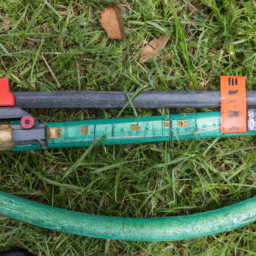Measuring Garden Hose Length Which Unit
Which Unit Is Best To Measure The Length Of A Garden Hose
Which Unit Is Best To Measure The Length Of A Garden Hose?
We often turn to the garden for relaxation, and for some of us, toiling in soil and pruning those branches is therapeutic. But the most exciting task has to be spraying water using those colorful hoses. Though you may be working your muscles, it's important to keep in the back of your mind, which unit of length is best suited to measure the length of your garden hose. Granted, the standard yardstick is a common choice to characterize the length of most of your garden tubes, but do you think it's the best for the job?
Metric vs Imperial: A Comparison
The metric units such as centimeter, for instance, are the most preferred when it comes to measuring garden-hose lengths. Why? Simply because of the accuracy the metric unit offers. The accuracy level is of an inch, which could be the difference between just an ok lawn and an exceptional one. In comparison, the Imperial unit only offers accuracy up to 1/16th of an inch, and since most gardens are prone to contain delicate flowers and surreptitious crops, you don't want to leave swimming in an inch of water.
Since most of the world's population uses the metric system, many are accustomed to these measurements.
Garden Hose Width
But it's not just length that sets apart the quality of garden hoses. Another factor is the width. Length usually affects the overall weight of the tube and can thus determine its overall sturdiness and effectiveness. Width has a major impact on the amount of water carried by the hose. This is usually given in millimeters or inches.
A common mistake people make is to choose garden hoses that are not the correct size. A narrow hose might limit the water flow, thus making it painful to water your plants and flowers. On the flip side, a wider hose might mean you will have to replace them often, thanks to wear and tear.
Measuring The Length of Hoses
An often-overlooked element of accuracy when it comes to measuring the length of hoses is knowing where to measure from. Manufacturers usually indicate the length of the hose from the cut end. This means that those extra metres you get when you extend the hose will be omitted from the measurement.
In addition to paying attention to the cut end of the hose, make sure you also look out for any kinks. Those can add to the hose length which, again, may lead to incorrect measurements.
What Does Extension Have To Do With It?
Extension also plays a role in showcasing the benefits of the metric system. When the hose is extended, the diameter is usually reduced and a corresponding increase in pressure is induced. The metric system can ensure that the resulting pressure reduction is probably negligible. In contrast, the imperial system may not be as helpful in this regard as the hose diameter does not increase significantly when it is extended.
What About Weight?
Weight also matters. The weight of the garden hose will also depend on the specific material used in the construction. This includes rubber, vinyl, or other light-weight flexible polymers.
Lightweight options are obviously the best as they make it easier to move the hose around or transport it back and forth to storage or other locations. The problem, however, is that even the most lightweight hoses tend to be bulky and therefore, once again, accuracy plays a role.
Final Word
As you can tell, there's a lot to consider when it comes to deciding the best unit of measurement to measure the length of a garden hose. The metric unit certainly presents some advantages, when it comes to accuracy and attention to the smallest details. But the imperial unit remains a popular option because of familiarity.
Ultimately, it boils down to what kind of accuracy you need, and how much you are willing to invest in time and money. Whether you prefer the metric or imperial system, it's important to pay attention to all the other details that can impact the accuracy and quality of your garden hose.
A Tip From GardeningExperts.com: Most hoses come labelled in both metric and imperial units so you can always double-check the measurements.

Previous Page
